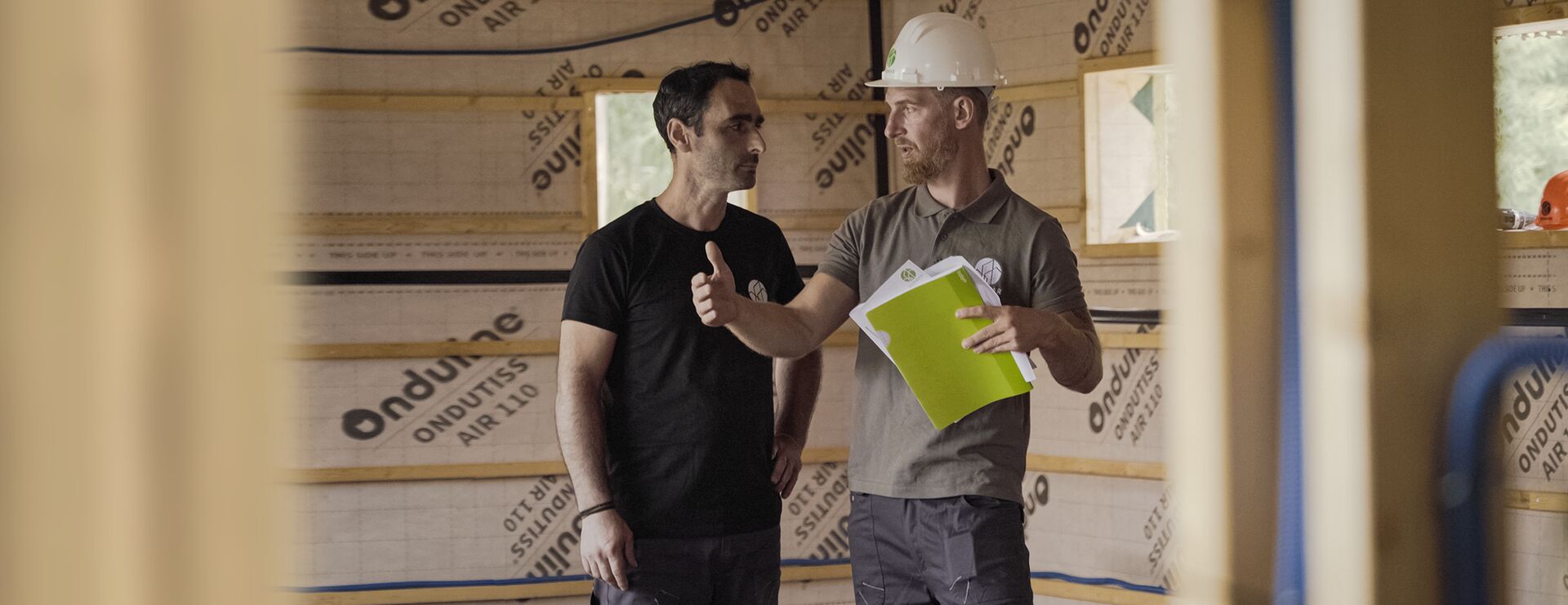Prefab benefits
Prefab wooden houses offer an exceptional blend of speed, cost efficiency, energy efficiency, and high-quality construction. Their rapid assembly, combined with the cost savings from minimized waste and labor, makes them an affordable and smart investment. The superior insulation properties of wood provide excellent thermal performance, leading to lower energy bills and a comfortable living environment year-round. With a focus on sustainability, these houses are built using renewable resources and environmentally friendly processes, ensuring a smaller carbon footprint.
The design flexibility and aesthetic appeal of wooden houses allow you to create a home that reflects your personal style and meets your functional needs. Enhanced sound insulation, reduced on-site disruption, and the health benefits of natural materials contribute to a better living experience. Additionally, the durability, seismic resilience, and lightweight nature of wooden frames ensure that your home is built to last.
Choosing to build a house using panelized prefab wooden technology means opting for a modern, sustainable, and efficient solution. It combines the best of traditional craftsmanship with innovative construction methods, resulting in a beautiful, durable, and environmentally responsible home. This is truly an excellent choice for anyone looking to build a new home.
Rapid Construction
Prefab wooden houses are assembled quickly, as the components are pre-manufactured in a factory. This significantly reduces on-site construction time, allowing homeowners to move in sooner compared to traditional building methods.
Cost Efficiency
The prefabrication process minimizes material waste and lowers labor costs due to the streamlined assembly. This results in a more cost-effective construction process, making prefab wooden houses an affordable option for many homeowners.
Energy Efficiency
Wooden houses provide excellent insulation, helping to maintain consistent indoor temperatures. This energy efficiency leads to lower heating and cooling costs, contributing to reduced utility bills and a smaller environmental footprint.
High Quality and Consistency
Prefabricated components are produced in a controlled factory environment, ensuring high quality and consistency. This reduces the risk of construction errors and enhances the overall durability and performance of the house.
Environmental Sustainability
Wood is a renewable resource, and the prefabrication process generates less waste compared to traditional construction methods. Additionally, the energy-efficient properties of wooden houses contribute to a reduced carbon footprint, making them an environmentally friendly choice.
Design Flexibility
Prefab wooden houses offer a high degree of customization, allowing for various architectural styles and interior layouts. This flexibility enables homeowners to create a home that suits their personal tastes and functional requirements.
Aesthetic Appeal
Wooden houses exude a natural warmth and charm that enhances their visual appeal. The use of wood as a primary material can create a cozy, inviting atmosphere both inside and out.
Improved Thermal Performance
Wooden structures provide superior thermal insulation, which keeps homes warm in the winter and cool in the summer, enhancing comfort and reducing energy consumption.
Sound Insulation
Wood has natural sound-absorbing qualities, providing better acoustics and reducing noise transmission within the home, leading to a quieter and more peaceful living environment.
Reduced On-Site Disruption
Since much of the construction work is done off-site, there is less noise, waste, and disturbance at the building site. This benefits both the construction team and the surrounding community.
Health Benefits
Wood is a natural material that helps regulate indoor humidity levels, creating a healthier living environment. It can also reduce the presence of harmful chemicals and improve indoor air quality.
Durability
Modern prefabricated wooden houses are built to last, with robust construction methods and high-quality materials ensuring long-term durability and resistance to various environmental factors.
Seismic Resilience
Wooden frame structures can flex under stress, making them more resistant to earthquakes compared to rigid building materials like concrete or steel.
Lightweight Construction
Wooden frames are lighter than other building materials, making them easier to transport and handle during the construction process. This can also reduce the load on the foundation, potentially lowering foundation costs.
Sustainable Manufacturing
The prefabrication process uses sustainably sourced wood and efficient manufacturing techniques, further enhancing the environmental benefits and sustainability of prefab wooden houses.



